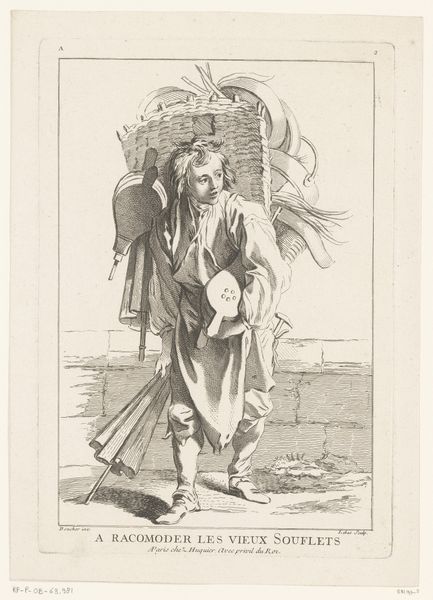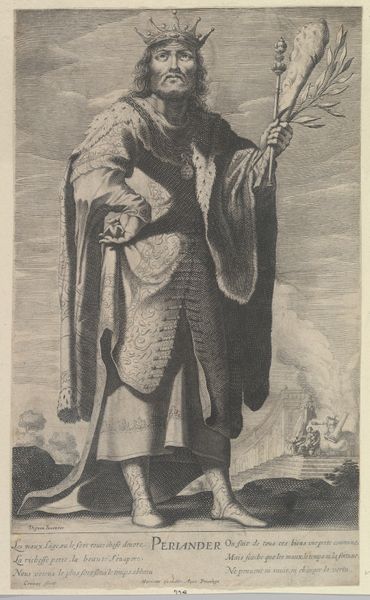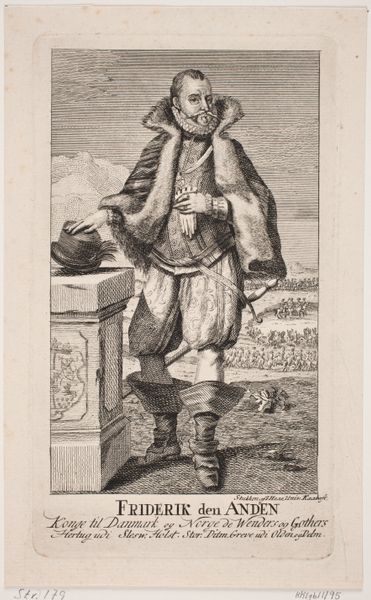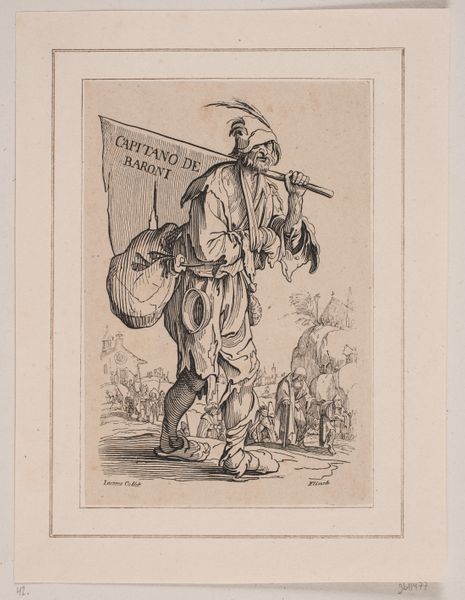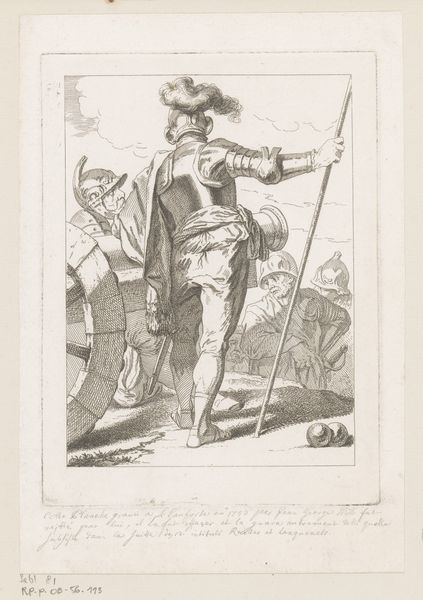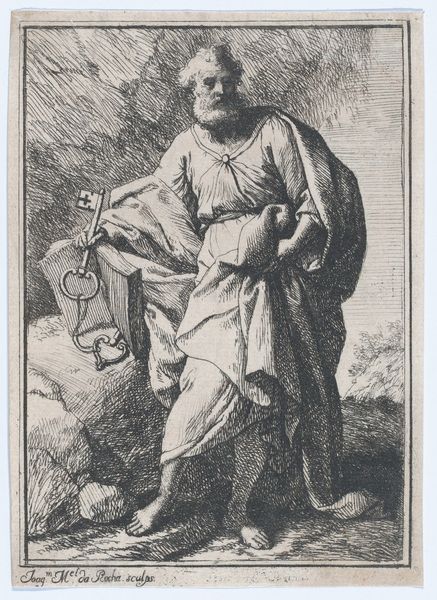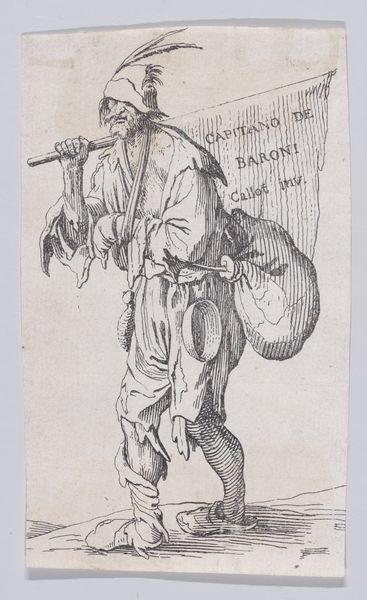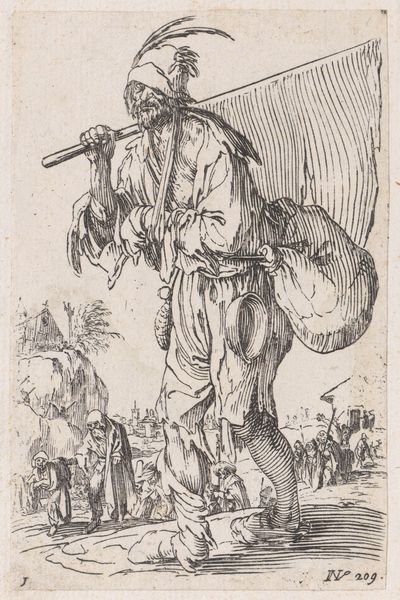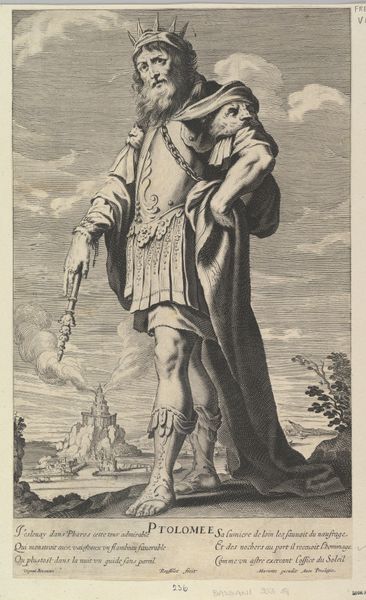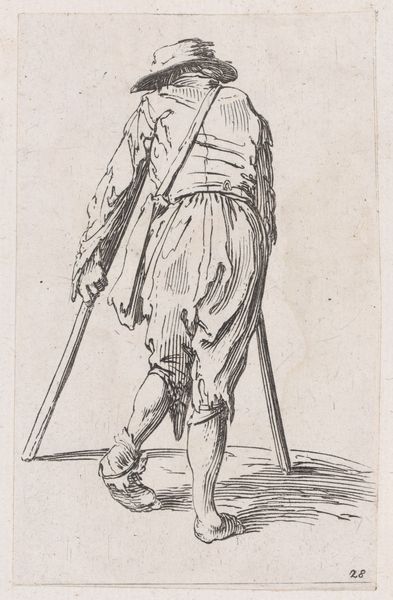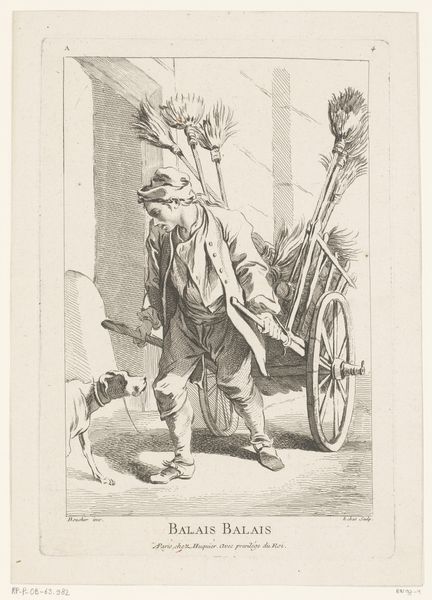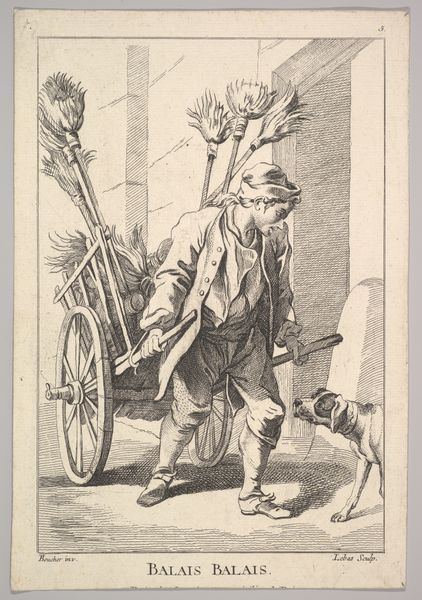
Reverse copy of A Racomoder les Vieux Souflets (Mend the Old Bellows), from Le Cris de Paris (The Cries of Paris), plate 3 1722 - 1783
0:00
0:00
drawing, graphic-art, print, engraving
#
portrait
#
drawing
#
graphic-art
#
baroque
# print
#
genre-painting
#
engraving
Dimensions: Sheet: 10 13/16 x 7 5/16 in. (27.4 x 18.6 cm) trimmed
Copyright: Public Domain
Editor: So, this is Jacques Philippe Le Bas's "Reverse copy of A Racomoder les Vieux Souflets (Mend the Old Bellows), from Le Cris de Paris (The Cries of Paris), plate 3," dating from sometime between 1722 and 1783. It's an engraving. The figure, weighed down by tools, looks really burdened; the whole thing speaks of labor. What strikes you most about it? Curator: For me, it’s about understanding how prints like this functioned as commodities. Le Bas wasn’t just representing a worker; he was creating a reproducible image intended for consumption. We need to think about the labor that went into its making - the engraver's skill, the printer’s craft, the distribution networks that got this image into people’s hands. Who was buying it, and what did it represent to them? Was it mere decoration or did it reflect an interest in the working class? Editor: That's fascinating! I hadn’t considered the labor behind the print itself. Did the people buying these prints understand or appreciate the skill and work involved, or were they only seeing the subject? Curator: That’s the question, isn’t it? Were they consciously considering the economic structures that supported the creation and distribution of this image? It’s important to realize prints democratized art, making images affordable. However, that also meant less prestige and often exploited labor to drive down costs, masking its origins from buyers and audiences. Editor: So it's not just a picture of work, but a product of it, implicated in its own economy? That adds a whole layer I hadn't seen. Thanks for helping me think about the making and the social impact of the print. Curator: Precisely! It prompts us to consider the material conditions that shape what we see and how art functions within the world of labor and capital. Hopefully that inspires your future analysis.
Comments
No comments
Be the first to comment and join the conversation on the ultimate creative platform.
